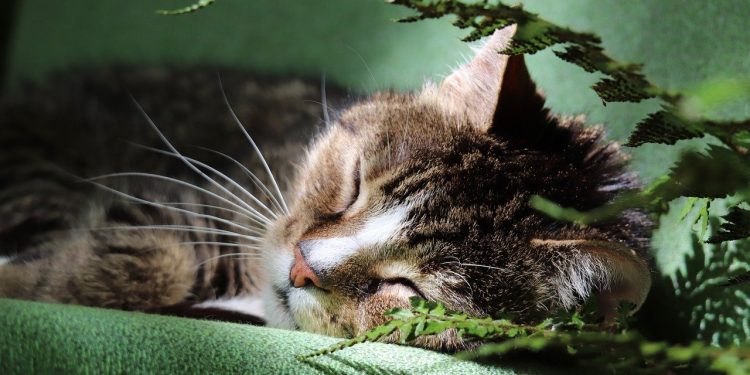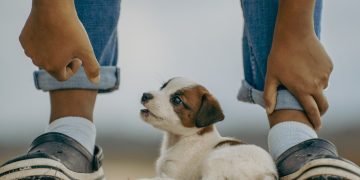Summer is a season of sunshine, outdoor activities, and longer days, but it also brings unique challenges for pet owners. High temperatures, increased outdoor exposure, and seasonal pests can pose risks to your furry, feathered, or scaly companions. To help your pet enjoy summer safely, it’s essential to adapt their care routine to the season’s demands. Here are some practical tips to ensure your pet stays healthy and happy during the summer months.
Hydration is Key
Proper hydration is crucial for your pet’s well-being, especially during hot weather.
- Provide Fresh Water: Ensure your pet has access to clean, cool water at all times. Change the water multiple times a day to keep it fresh.
- Portable Water Solutions: Carry a collapsible bowl and a water bottle for outdoor adventures.
- Signs of Dehydration: Watch for symptoms like dry gums, lethargy, or excessive panting, and consult your vet if you suspect dehydration.
Protecting Against Heat
Pets can quickly overheat during summer, so taking preventive measures is vital.
- Limit Outdoor Activities: Avoid walks or playtime during the hottest parts of the day. Early morning and late evening are safer.
- Provide Shade: Ensure your pet has access to shaded areas when outside. A pet-safe umbrella or canopy can be helpful for trips to the park.
- Never Leave Pets in Cars: Temperatures inside parked cars can rise dangerously high in minutes, even with windows cracked.
Grooming for the Season
Regular grooming helps pets stay comfortable and prevents heat-related issues.
- Brush Regularly: Brushing removes loose fur and promotes airflow to the skin.
- Consider a Summer Trim: For long-haired breeds, a professional trim can help reduce heat retention.
- Avoid Shaving Double-Coated Breeds: Their coats provide natural insulation against both heat and sunburn.
Summer Pests and Parasites
Increased outdoor time means higher exposure to fleas, ticks, and other pests.
- Use Preventatives: Regularly apply vet-approved flea, tick, and heartworm preventatives.
- Inspect Daily: Check your pet’s fur and skin for ticks or other pests after outdoor activities.
- Keep Bedding Clean: Wash pet bedding frequently to reduce the risk of infestations.
Sun Protection
Pets, like humans, can suffer from sunburn and heat-related conditions.
- Pet-Safe Sunscreen: Apply sunscreen to areas with less fur, such as the nose, ears, and belly. Avoid human sunscreens, as they may contain harmful ingredients.
- Provide Cooling Accessories: Cooling mats, bandanas, and vests can help keep your pet’s body temperature in check.
Exercise and Playtime
While exercise is important, summer requires adjustments to your pet’s routine.
- Choose Cooler Times: Opt for early morning or evening walks to avoid peak heat.
- Paw Protection: Test pavement temperature with your hand; if it’s too hot for your hand, it’s too hot for your pet’s paws. Use booties if needed.
- Water Play: Incorporate activities like swimming or sprinkler play to keep your pet cool and active.
Diet Adjustments
Summer may affect your pet’s appetite and dietary needs.
- Lighter Meals: Pets may eat less during summer; offer smaller, more frequent meals.
- Fresh Treats: Freeze pet-safe fruits like watermelon or make ice treats to help them cool down.
- Avoid Spoilage: Don’t leave wet food out for long periods, as it can spoil quickly in the heat.
Travel Safety
Many families take vacations during summer, and traveling with pets requires special considerations.
- Car Safety: Use a pet seatbelt or carrier to keep your pet secure during car rides.
- Frequent Breaks: Stop every few hours for bathroom and water breaks.
- Acclimate to New Environments: Allow your pet to adjust to new surroundings gradually to reduce stress.
Swimming Safety
Not all pets are natural swimmers, so take precautions around water.
- Supervise at All Times: Never leave your pet unsupervised near pools, lakes, or the ocean.
- Provide a Life Jacket: Use a pet-specific life jacket for added safety.
- Rinse After Swimming: Rinse your pet with fresh water to remove chlorine or salt, which can irritate their skin.
Recognizing Heatstroke
Knowing the signs of heatstroke can save your pet’s life.
- Symptoms: Heavy panting, drooling, vomiting, weakness, or collapse.
- Immediate Action: Move your pet to a cool area, offer small amounts of water, and apply cool (not cold) towels to their body. Seek veterinary care immediately.
Special Considerations for Different Pets
- Dogs: Be mindful of brachycephalic breeds like Bulldogs or Pugs, which are more prone to heat-related issues.
- Cats: Indoor cats may still need cooling measures if your home becomes too warm. Provide cool surfaces or fans.
- Small Animals: Ensure small pets like rabbits and guinea pigs are kept in well-ventilated, shaded areas away from direct sunlight.
- Reptiles: Monitor tank temperatures closely to avoid overheating.
Preparing Your Home
Keep your living space comfortable for your pet during the summer heat.
- Use Fans or Air Conditioning: Maintain a cool indoor environment.
- Create Cool Zones: Provide cool tiles, damp towels, or access to a basement.
- Limit Sun Exposure Indoors: Close curtains or blinds during peak sunlight hours.
By adjusting your care routine and staying vigilant, you can ensure your pet has a safe, enjoyable summer. Proper preparation and attention to their needs will help your pet thrive during this season of sunshine and warmth.












